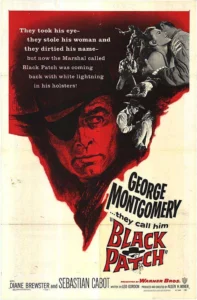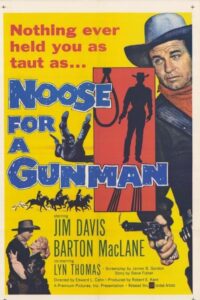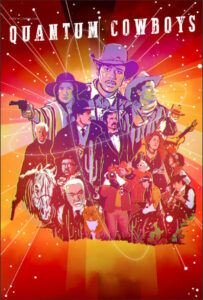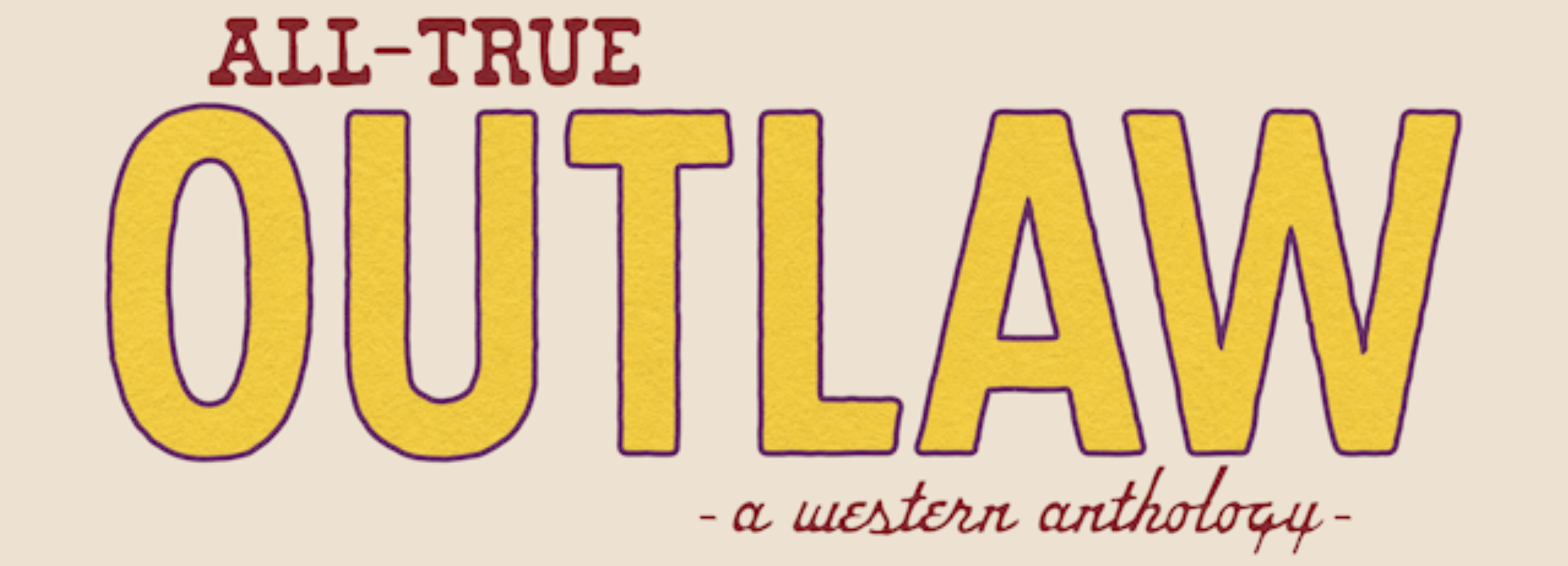Hi homesteaders,
This is another post for Project: 100 Westerns, where I watch anything under the genre umbrella and tell if you rocked or sucked. I’m fixin’ to watch 100 Westerns, no matter how long it takes me.
In this group of four, I took in a trio of movies from the heyday of Western filmmaking, and one that is very modern, both in production date, subject matter and technique.
#24. Black Patch (1957)

In a different era of Hollywood, there was no blueprint. Nowadays, the blueprint is coda.
What I’m cleverly trying to say is: things are way, way too formulaic now. Studios are taking few chances on anything “new”, while still trying to catch and retain “flashy”. This doesn’t just manifest in the bevy of franchises that hit the screens each year, but in the way these stories are told, as well.
Black Patch isn’t a great movie, but at least it’s interesting in structure and pace. There’s an element of it that feels novelistic, with its squishy characters wrestling with real consequences. We’re quickly introduced to “Black Patch” (George Montgomery) nicknamed so for the garb he wears over his eye lost in war, but in a previous life he was known as Clay Morgan. That past saunters into his present when his old Army pal, Hank (Leo Gordon — also the script writer!), enters the town with Clay’s former flame, Helen (Diana Brewster), as his wife. There’s another hitch – both men have new careers. Clay is a town marshal, and Hank a thief.
This stirs the drink well, and leads to some interesting plot dynamics that had me guessing until the very end. Side character Carl (also known as Flytrap), whom I previously known as Marv from High School Big Shot (a classic Mystery Science Theater 3000 episode) ascends from goofy side character to interesting menace, which helps kick the story along, even as other elements sputter by the end.
I liked this one, it’s got a different speed and plenty of pathos, even if it could have been a deal better in the third act.
#25. Hombre (1967)

Dr. Favor:
“That’s something you’ll learn about white people. They stick together.”
Hombre:
“They’d better.”
This is very likely the best film I’ve seen yet in Project: 100.
“Methodical” is the one word descriptor, applying to both pace and lead character. “Hombre” (née John Russell) is a smooth bro, calm in words and gait, and really doesn’t have time for any of your bullshit.
To dub this one of Paul Newman’s best performances would be a spicy take, his legendary filmography stands tall, but considering I’ve never heard of this film I’m going to say it’s an underrated entry in his catalogue of roles. Hombre is not a man pleased with the general nature of the “white world”, having been raised by Apache Indians from a young age, however when his adoptive (Caucasian) father dies and leaves him a piece of land, he ventures back into civilization.
Hombre surprisingly sells the boarding house property, catching the mild ire of acting landlord Jessie (Diane Cilento). They both catch the next stagecoach out of town and a bulk of the story is then told on the desert road. We get an interesting mix of characters in the horse-drawn vehicle, a host of personalities that clash and sway together extremely well from the jump. Also on board are a young couple unsatisfied with their time in the West, an affable Mexican driver, a doctor and his young(er) wife and a gruff, obliquely dangerous feller played by the always fabulous Richard Boone.
When this group of strangers find themselves in sudden danger, Hombre is compelled, reluctantly, to step up and lead them out of the desert. The most capable of the clan is hardly the most affable, and it leads to a lot of snappy dialogue with plenty of snips. The movie’s script is fantastic, and I’m curious how much dialogue is pulled straight from the 1961 Elmore Leonard book it was adapted from.
It’s got the blood and brawn of a standard Western flick, with some heart and guts to go along with it. A really good movie that boasts a blend of styles from the dying Tradition age and the forthcoming Revisionist era.
#26. Noose for a Gunman (1960)

The Steve Fisher short story “The Fastest Gun” was adapted into film three times over nine years. This is the second such attempt.
It’s fascinating that this movie was made within a decade of Hombre, the two films are so stylistically different it was jarring watching them so close together. That’s one of the neat things about this Western watching venture – witnessing the evolution of Hollywood and the medium of film. Whereas Paul Newman’s movie was “methodical”, Noose for a Gunman is plainly “stiff”. The actors spit out their lines like regimen, the action is tight, the personalities are narrow and direct. Early Westerns had this idyllic vibe that later iterations seemed to have shunned completely. Purposely so.
Jim Davis plays Case Britton, a hired gun who returns to his hometown of Rock Valley five years after murdering the sons of its biggest rancher and benefactor. Rock Valley balks at his sudden appearance, some even call for his immediate arrest and hanging, but Case still has friends in town, and is determined to meet his future bride, Della (Lyn Thomas), when she arrives via stagecoach.
Case deals with antagonism on many sides, from the rancher, Avery (Barton McLane), to his hired muscle Link Roy (Leo Gordon, again) and gang leader Cantrell (Ted de Corsia), this keeps the movie churning and interesting enough to grab this watcher, but right around the time Case becomes the town’s new marshal, I sort of checked out a bit. I do give credit to the climax however, which provides a bit of fun gunplay and the impressive choice to allow Della to play the hero in a tense moment.
I’m curious as to how the other two films adapted “The Fastest Gun”, it’s got the bones of a decent, though super formulaic story, but I didn’t see much to brag about in Noose for a Gunman.
#27. Quantum Cowboys (2022)

One of those “what the hell did I just watch?” movies.
A metafictional Western that uses several animation styles as well as live-action, Quantum Cowboys challenges the viewer to keep up, even as it scuttles ahead at warp speed. It’s the brainchild of Geoff Marslett, and commendable in its subject matter and technique, but at times I found it a little too wonky and unfocused to be a winner in the genre.
The movie oscillates between several viewpoints, from the co-lead cowboy types, to a narrator akin to Utau the Watcher, and a voyeuristic film crew seemingly manipulating some events. As you may glean from the title, there is an element of time travel in the plot (and themes!) and heady ideas about memory and reality are poured onto the audience within the first few minutes.
The basic gist: Frank (Kiowa Gordon) and Bruno (John Way) are a pair of friends who get wrapped up in temporal hijinks, and bump into a host of weirdos, including a lady drifter-type played by Lily Gladstone. It takes a long while for the plot to adjoin the puzzle pieces, but the psychedelic, cartoony cinematography kept me into it as I waited for the story to cohere.
The third act delivers some payoff, but also falls victim to the tropes of time travel stories, and then sort of just ends without a direct resolution. There’s a notation that this is the first part of a larger story, though given how off-the-wall the themes and editing are, I almost feel like the abrupt final moments were an intentional troll.
Lots of points for ambition here, and I could even be convinced to watch it again.
An interesting bunch, to say the least. I’m realizing now I maybe should have group some of these thematically. It certainly would have been easier to write!
Please return July 7th, 2025 for a brand new All-True Outlaw comic! That’s eight in eight months, if you’re countin’!
Westward!
~Jamil

